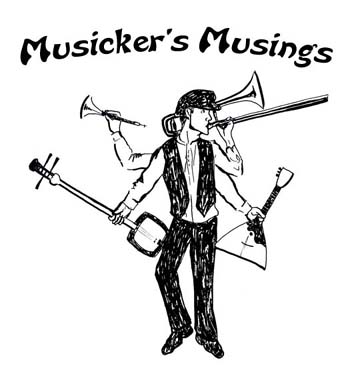
Musicker’s Musing #7: Processing Little Black Dots
It took many years before it dawned upon me what an astounding feat it is for someone to be able to read (and thus play) music. In this case I’m thinking specifically of standard music notation: you know, the little black dots (notes) spread across a grid (staff).
This musical system’s ability to convey information about how to recreate a particular song(s) truly is genius. I’m going to risk revealing a bias toward piano by using is as the example for this musing. All those little black dots (again, notes) on the page communicate to the pianist which of the eighty-eight keys is to be pressed; for how long; in combination with which other keys; and with what sense of rhythm. Certain extra notation marks can communicate how loudly or softly the keys are to be pressed and if any other special way of pressing the key (articulation) is suggested.
Many of those who spend time learning to decode these dots can eventually do so in micro-seconds, some tackling hundreds and hundreds of dots in a continuous flurry of motion. Their brains convert those dots into the actions of their ten fingers striking the required individual keys of the eighty-eight laid before them.
I suspect that if an experiment was carried out (with a composition of some length and difficulty) in which the black dots still represented their respective keys but no sound came out of the instrument, that most players would quickly tire of trying to complete the herculean task of pressing the right keys at the exact right time in the exact right sequence. The sound of the song with its rhythm and/or melodies and harmonies is – if not essential, at least extremely helpful – for the brain to complete the conversion process. Making sound is the reason for the endeavor after-all, but my point is that the sound/music itself is the oil that makes the machine, and these lightning fast connections, function correctly.
The musical notation system isn’t perfect by any means, for example: it’s a bit confounded by swing rhythm. Seems to me someone who had never heard music that swings before would have a difficult time recreating it just by looking at the notes and/or reading explanations of how to adjust striking those notes slightly to create the desired effect. Still, kudos to humanity for coming up with an ingenious system that allows us to share musical ideas, one person to another, in the now and across spans of time.
